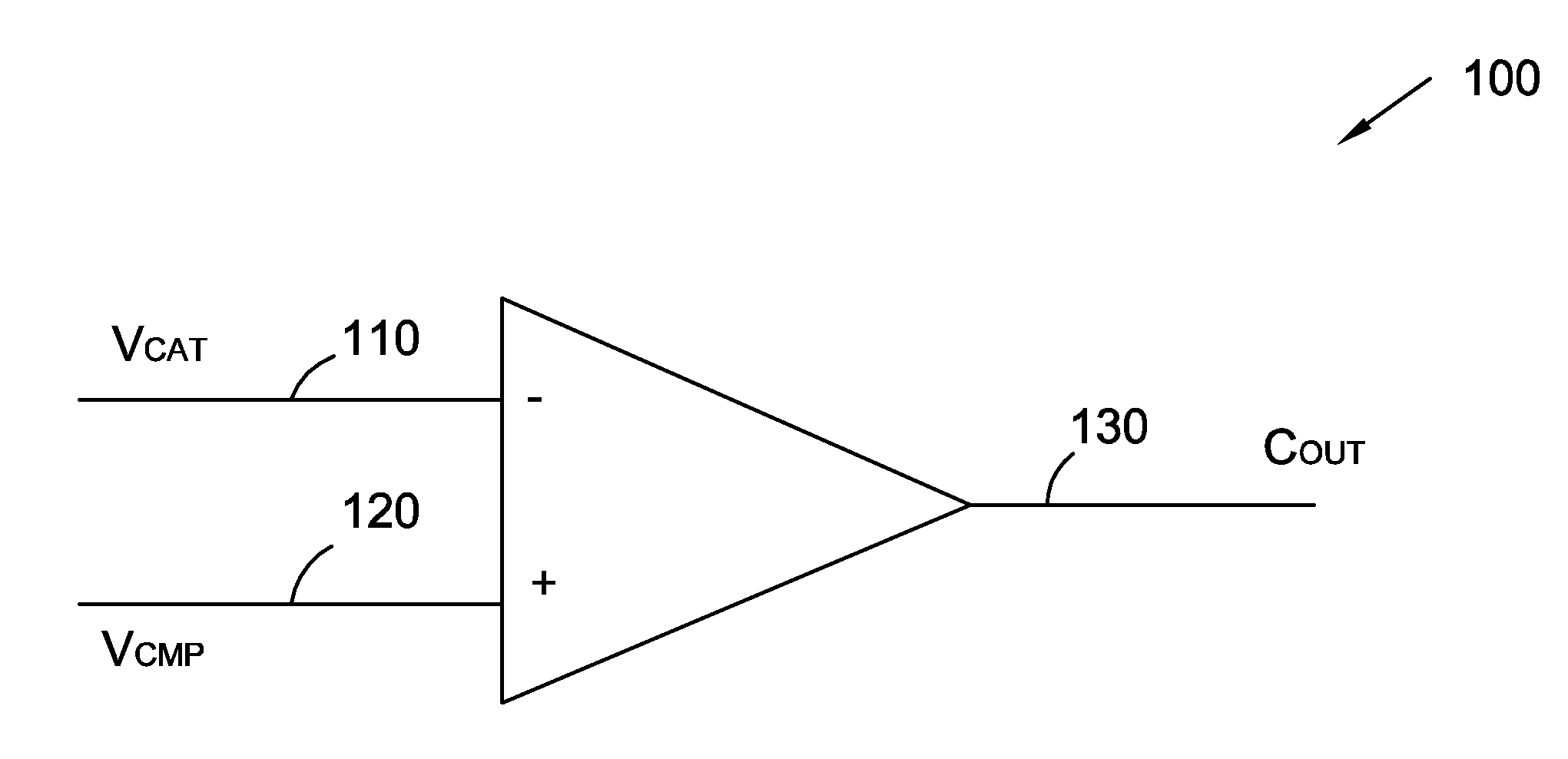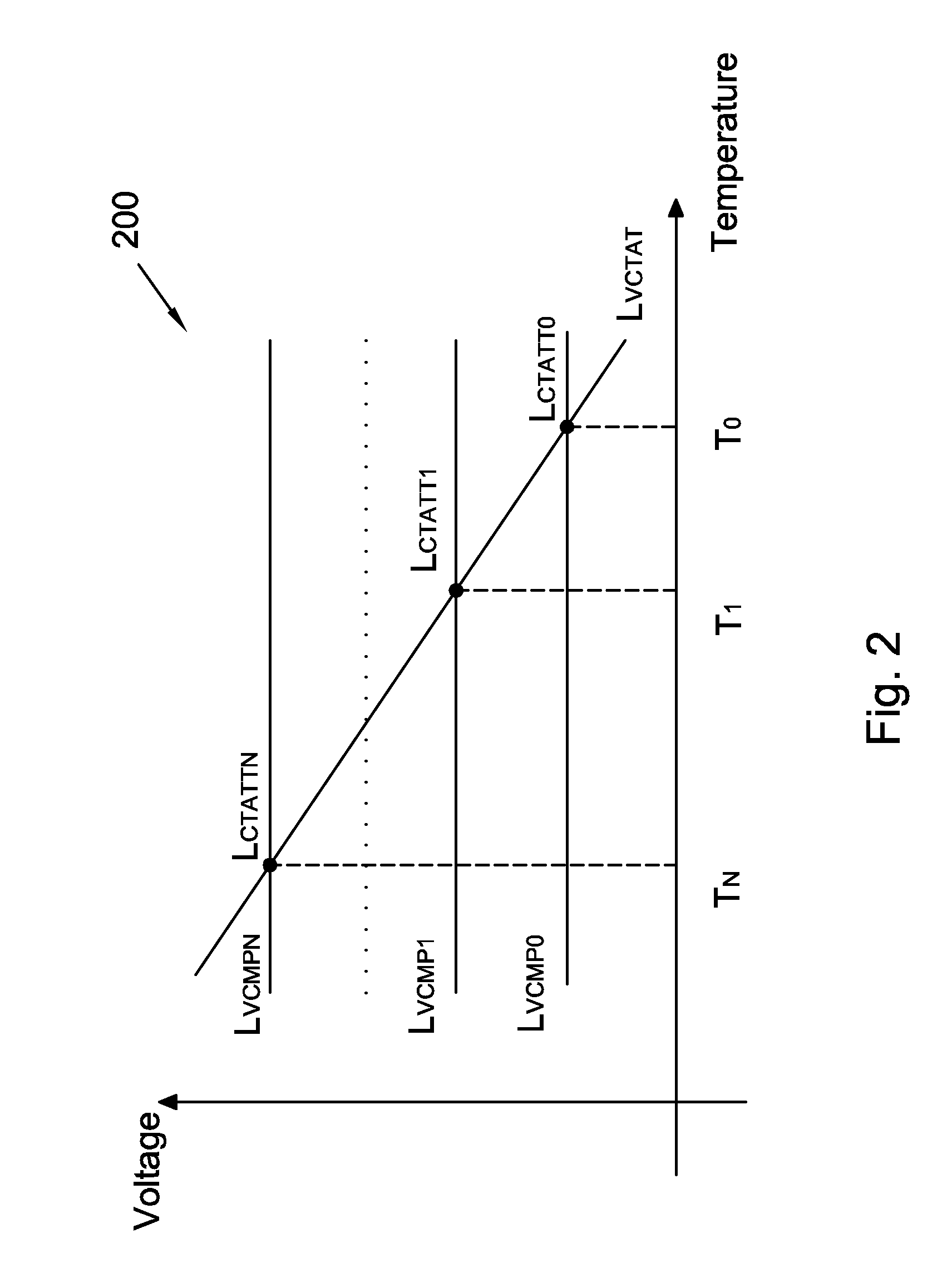Thermal sensors and methods of operating thereof
a technology of thermometers and sensors, applied in the field of thermometers, can solve the problems of poor temperature measurement accuracy, and thus better dac code-to-temperature linearity, and achieve the effects of improving the accuracy of the temperature sensing circuitry, simple temperature calibration, and accurate temperature sensing
- Summary
- Abstract
- Description
- Claims
- Application Information
AI Technical Summary
Benefits of technology
Problems solved by technology
Method used
Image
Examples
1st embodiment
Circuit Providing VCTAT and VCMP—1st Embodiment
FIG. 4 shows a circuit 400 providing VCTAT and VCMP, in accordance with a first embodiment. For illustration purposes, FIG. 4 also includes comparator 100. VCMP, going through circuit 400 having a negative temperature coefficient circuit component canceling the temperature effect with a positive temperature coefficient circuit component results in a low or insignificant temperature coefficient.
Transistors M1, M2 and amplifier A1 constitute a current mirror wherein amplifier A1 equalizes currentIM1 and IM2 and voltages at NODE1 and NODE2. Because IM1 equals to IM2, IM, for illustration purposes, is used to refer to either IM1 or IM2. At node NODE1 IM1=I21+IQ1 while at node NODE2 IM2=IQ2+I22. Bipolar transistor Q1 is configured as a diode because a diode has negative temperature coefficient. VCTAT is in fact VBE (voltage from the base to emitter) of transistor Q1, and, for illustration purpose, is referred to as VBEQ1. Bipolar transistor ...
PUM
| Property | Measurement | Unit |
|---|---|---|
| temperature | aaaaa | aaaaa |
| temperature | aaaaa | aaaaa |
| temperature | aaaaa | aaaaa |
Abstract
Description
Claims
Application Information
 Login to View More
Login to View More - R&D
- Intellectual Property
- Life Sciences
- Materials
- Tech Scout
- Unparalleled Data Quality
- Higher Quality Content
- 60% Fewer Hallucinations
Browse by: Latest US Patents, China's latest patents, Technical Efficacy Thesaurus, Application Domain, Technology Topic, Popular Technical Reports.
© 2025 PatSnap. All rights reserved.Legal|Privacy policy|Modern Slavery Act Transparency Statement|Sitemap|About US| Contact US: help@patsnap.com



